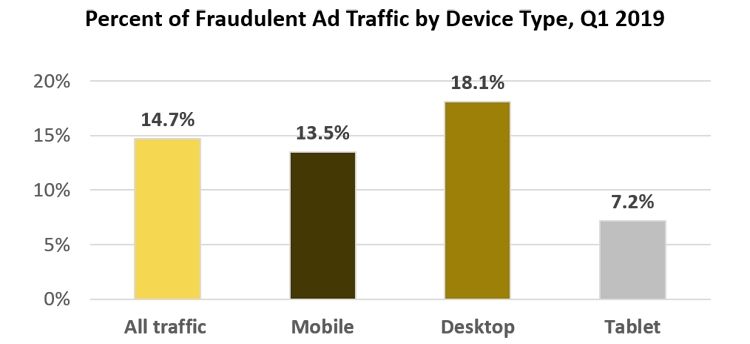Customer experience is the next competitive battleground. And when waging that battle, creativity is good, but the technology behind it is crucial. Programmatic media buying combines creativity and powerful technology to deliver a personalized experience across multiple screens.
One of the main benefits of programmatic technology is that it shows real-time data, which helps companies optimize their creative and rapidly adjust their marketing strategy to customer needs. And the demand for greater transparency is making digital marketers seriously consider doing their programmatic media buying in-house.
A recent IAB study found that of the 65% of marketers who purchase ads programmatically, 18% have moved it in-house and 47% are planning to bring various functions in-house.
There are giant companies that have already integrated the programmatic approach into their daily operations. But how can you both create a programmatic-centered organization that's flexible enough to keep up with the drastically changing industry and stay customer-focused?
A Need for Change: Who Benefits From Programmatic?
Brands are starting to prioritize their requirements and are not relying simply on supply chain dominance. Instead, they are willing to create an effective cross-channel relationship with customers.
CMOs are now responsible not only for marketing budgets but also for fulfilling the company's business objectives. Data has become their key competitive advantage—specifically, how they harness data, read it, and craft it to meet the customers' needs and expectations. A better and more personalized customer experience achieves better outcomes and more brand loyalty.
Ad agencies are developing and acquiring digital, creative, and design expertise. Meanwhile, traditional agency holding companies are developing their consulting, data, and technology competencies.
Programmatic has undergone massive growth in the following countries:

Fully 80% of programmatic advertisers value programmatic for its benefits, including audience targeting, transparency, and real-time performance optimization. Let's take a closer look at four advantages of implementing programmatic media buying.
1. Performance optimization. In the programmatic landscape, media buying is done in real-time, which means you'll have all the necessary stats on your ad performance instantly. Data-driven performance optimization helps you to reallocate your ad budget smartly, making every dollar work for you.
2. Smart targeting technique. One of the primary benefits of programmatic media buying is the opportunity to laser-target your audience. The vast majority of programmatic advertising software has 30+ targeting options that can help you extract the most valuable audience to bid on.
3. Efficient cross-channel advertising. Programmatic ad tech enables you to advertise on mobile, desktop, tablets, apps, etc. within a single account. Remember how Facebook ads are limited to the formats and run only on one platform? Well, programmatic software helps you go far beyond Google and Facebook to reach your audience worldwide. Programmatic buying connects you to hundreds of thousands of media sources. Instead of executing buys via multiple channels separately, you can unify your media buying and reach your audience from one programmatic platform. You can run high-performing ad formats, including rich media and native ads that are interactive and personalized.
4. Track and measure. Programmatic gives you the opportunity to adjust your entire campaign based on your objectives and goals immediately, not at the end of the month. Programmatic advertising helps leverage data to reach the target audience at the right time with nondisruptive ads. It helps you focus on "buying audience" instead of "buying traffic."
How to Start Buying Ads Programmatically
Programmatic is thought to be the hardest-to-implement technology. I'll try to demystify some of the complexity surrounding programmatic media buying for advertisers, agencies, and brands.
Programmatic media buying is done through a demand-side platform (DSP)—software that automates ad buying, placement, and optimization of media inventory in real-time. DSPs are integrated into multiple ad exchanges. A DSP allows you to maintain control over your ad performance and achieve almost 100% transparency while tracking each source of traffic openly in your account.
There are three levels of programmatic advertising adoption. If you don't have the time or resources to hire an extra person for programmatic media buying, start with the first level.
Level 1. Performance-Based Ad Agency
With programmatic ad buying on the rise, many marketers are looking to merge their media buying teams to stay competitive. Many advertisers and brands are not yet ready for the serious programmatic shift that usually requires hiring at least one programmatic media buying specialist and a bit deeper dive into the subject; they prefer to instead work with performance-based agencies on a CPA basis.
With the Programmatic Evolution, brands now require more detailed and timely performance stats around their campaigns. Their agencies should not only send them those stats but also become a catalyst for real change in their client's digital companies. The new data-driven agency should be a consultant, empowered by the newest technologies and deep expertise, ready to implement the innovative services and scale up the client's performance.
Among the trusted players in the market are Accenture, Infectious Media, and Amplifi.
Pros: Quick start, strong programmatic media buying team, constant optimization, external support.
Cons: Some advertising agencies can still lack transparency; agency fees start at $2000 and are highly affected by your digital ad spend.
Level 2. Demand-Side Platform
If you aren't new to the programmatic ad buying market, you may have tried advertising through a DSP platform.
A proper demand-side platform is a crucial part of your programmatic advertising campaign. Choose the DSP that has a variety of ad formats and offers precise targeting options. Advertisers usually deal with 3-4 different DSPs simultaneously.
When you are tired of agencies that don't run complex ad campaigns, you may want to consider self-service demand-side platforms such as Self-Serve DSP, Targetoo, and Platform.IO.
Pros: greater transparency and control.
Cons: Difficult to control multiple DSP accounts; platform fees for using 3-4 DSPs can be expensive.
Level 3. White Label Demand-Side Platform
"White-labeling the DSP" means taking a ready-to-use technology and selling it as your own. White label DSPs are a perfect fit for advertisers and agencies that want to expand their expertise and integrate DSP software without building their own solution from scratch.
You can use a White Label DSP as an individual traffic reseller or add it as a service for your digital advertising agency. Agencies can provide their advertisers with self-serve accounts to track and keep performance under control.
You can change terms and conditions, use your company's colors and logo, set up branded emails, etc. In a nutshell, you can do everything that you want; the technology is yours. Among the biggest advantages of buying traffic with your own DSP is the absence of middlemen and the presence of 100% transparency.
Among well-known white label DSP players are Epom DSP, Targetoo, Taggify.
Pros: Unite all your media buying in one place, no fee to third-party ad networks, total control, access to hundreds of publishers and SSPs within a single account.
Cons: Because there is no middleman between client and publisher, if something goes wrong advertisers can only blame themselves; not suitable for advertisers with limited media buying needs.
How to Evaluate Programmatic Partners: Key Criteria
The better you know your true needs, and the sooner you set proper KPIs, the less time you'll spend on searching for the perfect vendors/agencies.
Identify all the business requirements that the platform will need to support, and write out your short list for evaluation. Identify the crucial needs and demands that a DSP has to support. Take this evaluation list and do some research on G2 Crowd—a great place to source feedback and user reviews across a broad set of ad tech platforms.
Platform/Agency Fees
In relation to platform fees, DSPs are divided into two types: paid and free. The vast majority of DSPs take a fee or margin for using their platforms. Look closer at the advantages DSPs offer: They can charge extra for custom features, deep analytics, and extended functionality.
Free platforms include self-serve DSPs with basic features: You don't pay for the platform itself, but you may pay 10-15% of your expenses for bidding on their traffic.
Main DSP Focus
The reason certain DSPs usually perform better in one particular channel while being average on others is the limit on bids that DSPs can make on certain traffic. Some DSPs focus solely on mobile inventory integrations or video. If you need a truly complex multiscreen advertising solution, choose the DSP that supports video, display, and mobile advertising, and then unite all your media buying activities in one account.
Automated Optimization
Because of machine-learning mechanisms, manual optimization has become all but a relic. Automated optimization is a feature that controls your ad activities 24/7; each DSP has its own variations of it.
Traffic Safety and Fraud Control
Lack of viewability and invalid traffic can doom a campaign before it starts. Ask in advance which third-party traffic validation services the agency/DSP is integrated with.

Programmatic does require investments: people, budgets, time. But it can be transformative for marketing departments and advertising processes for many brands.
As more companies are finding out, programmatic is more than just a way to automate media buying and spend marketing budget wisely; it is a secret key to driving personalized, efficient, and profitable customer journeys.




